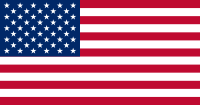Rehovot
| Rehovot | ||
|
|
||
| Hebrew | רְחוֹבוֹת | |
| Name meaning | Broad Places[1] | |
| Founded in | 1890 | |
| Government | City | |
| District | Center | |
| Population | 106,200 (2007) | |
| Jurisdiction | 23,041 dunams (23.041 km2/8.896 sq mi) | |
| Mayor | Shuki Forer | |
Rehovot (Hebrew: רְחוֹבוֹת (audio)) is a city in the Center District of Israel, about 20 km south of Tel Aviv. According to the Israel Central Bureau of Statistics (CBS), at the end of 2007 the city had a total population of 106,200.[2] Rehovot's official website estimates the population at 114,000. Rehovot's mayor is Shuki Forer.
Rehovot was built on the site of Doron, a Jewish community that existed in the time of the Mishna. The site was also the location of Khirbet Duran, populated during the Roman, Byzantine and early Arab periods. The city is named after a biblical town of the same name (transliterated Rehoboth in the KJV Bible), which stood at a different location, in the Negev Desert.
Contents |
History
It was founded in 1890 by Polish Jews who wanted a township independent of the Baron Edmond de Rothschild's aid (and management). Israel Belkind, one of the original founders of the settlement, proposed the name Rehovot (lit. 'wide expanses') based on Genesis 26:22 : "And he called the name of it Rehoboth; and he said: 'For now the LORD hath made room for us, and we shall be fruitful in the land.'" The name was accepted. In 1906 they were joined by immigrants from Yemen.
These early settlers worked hard to make Rehovot the prosperous town it is today. They planted vineyards, almond orchards and citrus groves. Rehovot has become one of Israel's main citrus centers, especially since nearby Ashdod opened its port in 1965. They withstood agricultural failures, plant diseases, and marketing problems.
Between 1914 and 1991 the population rose from 955 to 81,000, and the area of the town more than doubled. In 1995, there were an estimated 337,800 residents living in the greater Rehovot area. In 1932 an agricultural research station was transferred there from Tel Aviv; 30 years later it became the Department of Agriculture of the Hebrew University of Jerusalem. In 1934 Chaim Weizmann built the Sieff Institute in Rehovot, which later became the Weizmann Institute of Science. He and his wife are buried on the Institute's manicured grounds.
Demographics


As of 2007, the ethnic makeup of the city is 99.8% Jewish and other non-Arabs, without significant Arab population. See Population groups in Israel.
There are 49,600 males and 52,300 females. The population of the city was spread out with 31.6% 19 years of age or younger, 16.1% between 20 and 29, 18.2% between 30 and 44, 18.2% from 45 to 59, 3.5% from 60 to 64, and 12.3% 65 years of age or older. The population growth rate was 1.8%.[3]
Income
As of 2004, in the city there were 41,323 salaried workers and 2,683 are self-employed. The mean monthly wage for a salaried worker in the city is ILS 6,732, a real change of -5.2% over the course of the previous year. Salaried males have a mean monthly wage of ILS 8,786 (a real change of -4.8%) versus ILS 4,791 for females (a real change of -5.3%). The mean income for the self-employed is 6,806. There are 1,082 people who receive unemployment benefits and 6,627 people who receive an income guarantee.[3]
Education


As of 2004, there are 19,794 students and 53 schools in the city, including 30 schools with 9,875 elementary school students and 29 schools with 9,919 high school students.[3] 61.3% of 12th grade students were entitled to a matriculation certificate.
Institutes of Higher Learning
The city is home to the prestigious Weizmann Institute of Science and to the Faculty of Agriculture of the Hebrew University of Jerusalem. There are also a number of smaller junior colleges in Rehovot that provide specialized and technical training. In addition, Kaplan Hospital acts as an ancillary teaching hospital for the Medical School of the Hebrew University of Jerusalem.
Sport
Rehovot has had three clubs represent the city in the top division of Israeli football, Maccabi Rehovot between 1949 and 1956, Maccabi Sha'arayim between 1963 and 1969 and again in 1985, and Hapoel Marmorek in the 1972-73 season.
Today Mamorek is the highest ranked club, playing in Liga Artzit, the third level. Maccabi Sha'arayim play in Liga Bet, the fifth level, whilst Maccabi Rehovot play in Liga Gimel, the sixth and lowest division.
Sister Cities
 Manchester, England
Manchester, England Parana, Argentina
Parana, Argentina Grenoble, France
Grenoble, France Philadelphia, United States
Philadelphia, United States Rochester, United States
Rochester, United States Albuquerque, United States
Albuquerque, United States Heidelberg, Germany
Heidelberg, Germany
Notable residents
- Chaim Weizmann
- Gidi Gov
- Shlomo Glickstein
- Eyal Golan
- Aki Avni
- David Batt
- Ephraim Katzir
- Zvi Voormfeld
References
- ↑ From Genesis 26:22. Word stems from raḥav (רחב), meaning broad.
- ↑ "Table 3 - Population of Localities Numbering Above 1,000 Residents and Other Rural Population". Israel Central Bureau of Statistics (2008-06-30). Retrieved on 2008-10-18.
- ↑ 3.0 3.1 3.2 According to Israel Central Bureau of Statistics data [1] (Hebrew)
External links
- City council website (Hebrew)
- English language guide to Rehovot
- Rehovot Weizmann Institute
- A brief history of Rehovot Weizmann Institute
- MyRehovot.info
- Rehovot Portal (Hebrew)
|
||||||||||||||||